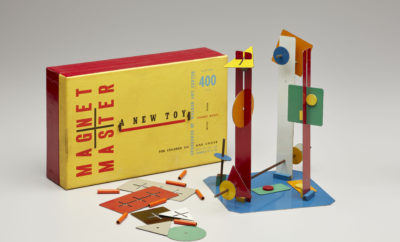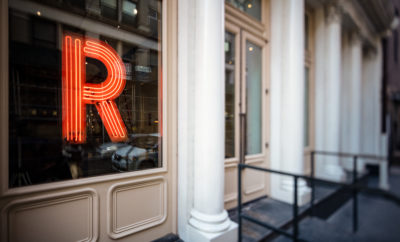
Architecture
North America’s First Architecture Biennial

Photo by Iwan Baan
With the launch of the Chicago Architecture Biennial on October 3 (running to January 3, 2016), the city will once again prove itself as a locus of architectural ingenuity and discourse. Under the title “The State of the Art of Architecture,” the Biennial—the first of its kind in North America—will gather some sixty firms and practitioners from around the world to shed light on the state of the field today through new and commissioned architectural works, lectures, film series, performances, and exhibitions. Co-Artistic Director Sarah Herda discusses the motivation for the Biennial and her vision for the event.

Bureau Spectacular, White Elephant, 2011. Photo by Magnus Lindqvist.

Didier Faustino, This Is Not A Love Song, 2014.
What was the impetus for the Biennial?
It’s really the city taking stock of something that’s incredibly important and unique about Chicago, its architecture. That was a jumping off point, and we’ve been working for the past three years to really think about the opportunities that Chicago presents and what the field needs now.
Why is Chicago the location for the first architecture biennial in North America?
It’s hands down the most important city in this country for architecture….The innovations that have been made in Chicago for over a century are the canon. They’re what shaped architectural discourse. You think of people like [Daniel] Burnham and [Louis] Sullivan and [Frank Lloyd] Wright and Mies [van der Rohe] and Bertrand Goldberg. No matter where you are in the world, if you studied architecture, you learned about Chicago. With such a rich and shared history, it’s the perfect launching pad to talk about what’s happening now and the future of the field.
How do you see the Biennial in an international context?
The mayor [Rahm Emanuel] wanted to have a major global event, and to do that we needed to bring people from all over the world. We were also particularly interested in finding new voices to give this space over to, and we were conscious of making a new global platform for new voices. [The participants] are not the usual suspects.
What is the significance of the Biennial’s title, “State of the Art of Architecture”?
It’s a direct reference to a conference that the Chicago-based architect Stanley Tigerman organized in 1977 and there are a couple things that really inspired us about that. The first was that, in a way, it was bringing the world to Chicago…but what had more of an impact on us was that he had this very clear request to participants to come with a position and a project that demonstrated their ambition. Instead of choosing a theme and then selecting [architects] to prove our argument, we really wanted this to be a conversation about what’s happening and what’s important in the field and we didn’t want to assume that we knew what that was….There’s a range of voices and positions and we want the Biennial to demonstrate that that is the state of the field today….Things could get much more focused in future years; this just felt like the right way to start the conversation.
What impact do you see the Biennial having on the field and the public’s understanding of architecture?
For the public, I think it will be an expanded understanding of what architects are doing today. People deal with architecture every single day and this is a way into the ideas that are shaping architecture…. For the field, we’re bringing people together that don’t necessarily know each other and aren’t necessarily familiar with each other’s work. That’s an exciting moment…to see what collaborations may spark, what discussions, what new ideas will come out of it.
The Biennial also has a broad range of public programming. Why was this important?
We’re integrating all aspects of how architectural ideas could be expressed. For example, we’re collaborating with the Harris Theater in Chicago, which has commissioned the architect Steven Holl and the New York-based choreographer Jessica Lang to do a new piece together. Music has long informed Holl’s architectural practice, and I hadn’t realized that he had never collaborated with dance before. To me it’s so exciting that the Biennial is the occasion to do something you might not usually do, even for the architects. chicagoarchitecturebiennial.org












